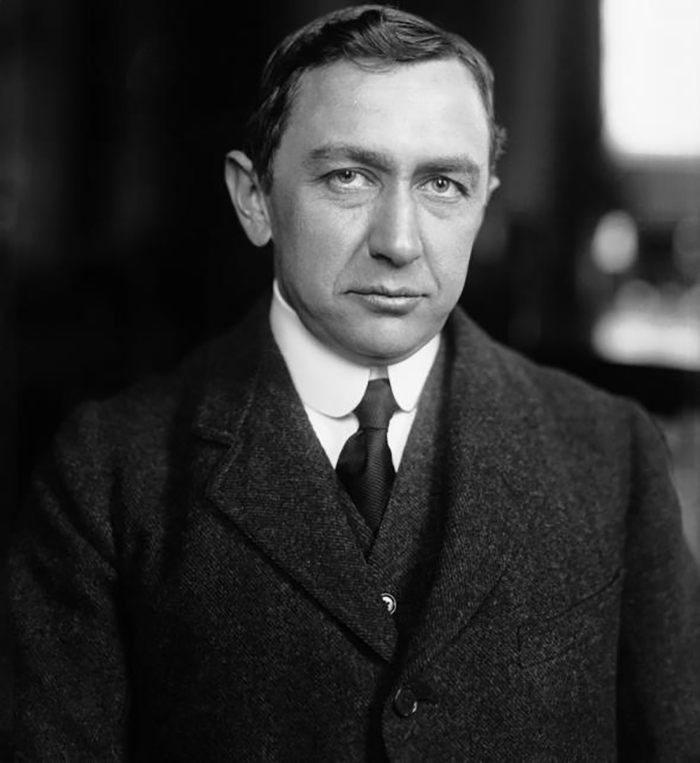The Ivy Lee Method: The Daily Routine Experts Recommend for Peak Productivity.

{source}
By 1918, Charles M. Schwab was one of the richest men in the world.
Schwab was the president of the Bethlehem Steel Corporation, the largest shipbuilder and the second-largest steel producer in America at the time. The famous inventor Thomas Edison once referred to Schwab as the “master hustler.” He was constantly seeking an edge over the competition. (1)
One day in 1918, in his quest to increase the efficiency of his team and discover better ways to get things done, Schwab arranged a meeting with a highly-respected productivity consultant named Ivy Lee.
Lee was a successful businessman in his own right, and is widely remembered as a pioneer in the field of public relations. As the story goes, Schwab brought Lee into his office and said, “Show me a way to get more things done.”
“Give me 15 minutes with each of your executives,” Lee replied.
“How much will it cost me?” Schwab asked.
“Nothing,” Lee said, “unless it works. After three months, you can send me a check for whatever you feel it’s worth to you.” (2)
The Ivy Lee Method
During his 15 minutes with each executive, Lee explained his simple method for achieving peak productivity:
- At the end of each work day, write down the six most important things you need to accomplish tomorrow. Do not write down more than six tasks.
- Prioritize those six items in order of their true importance.
- When you arrive tomorrow, concentrate only on the first task. Work until the first task is finished before moving on to the second task.
- Approach the rest of your list in the same fashion. At the end of the day, move any unfinished items to a new list of six tasks for the following day.
- Repeat this process every working day.
The strategy sounded simple, but Schwab and his executive team at Bethlehem Steel gave it a try. After three months, Schwab was so delighted with the progress his company had made that he called Lee into his office and wrote him a check for $25,000.
A $25,000 check written in 1918 is the equivalent of a $400,000 check in 2015. (3)
The Ivy Lee Method of prioritizing your to-do list seems stupidly simple. How could something this simple be worth so much?
What makes it so effective?

Portrait of Ivy Ledbetter Lee from the early 1900s. (Photographer: Unknown)
On Managing Priorities Well
Here’s what makes Ivy Lee’s productivity method so effective:
It’s simple enough to actually work. The primary critique of methods like this one is that they are too basic. They don’t account for all of the complexities and nuances of life. What happens if an emergency pops up? What about using the latest technology to our fullest advantage? In my experience, complexity is often a weakness because it makes it harder to get back on track.
Yes, emergencies and unexpected distractions will arise. Ignore them as much as possible, deal with them when you must, and get back to your prioritized to-do list as soon as possible. Use simple rules to guide complex behavior.
It forces you to make tough decisions. I don’t believe there is anything magical about Lee’s number of six important tasks per day. It could just as easily be five tasks per day. However, I do think there is something magical about imposing limits upon yourself.
I find that the single best thing to do when you have too many ideas (or when you’re overwhelmed by everything you need to get done) is to prune your ideas and trim away everything that isn’t absolutely necessary. Constraints can make you better. Lee’s method is similar to Warren Buffett’s 25-5 Rule, which requires you to focus on just five critical tasks and ignore everything else.
Basically, if you commit to nothing, you’ll be distracted by everything.
It removes the friction of starting. The biggest hurdle to finishing most tasks is starting them. Getting off the couch can be tough, but once you actually start running, it is much easier to finish your workout. Lee’s method forces you to decide on your first task the night before you go to work.
This strategy has been incredibly useful for me. As a writer, I can waste three or four hours debating what I should write about on a given day. If I decide the night before, however, I can wake up and start writing immediately. It’s simple, but it works. In the beginning, getting started is just as important as succeeding at all.
It requires you to single-task. Modern society loves multitasking. The myth of multitasking is that being busy is synonymous with being better. The exact opposite is true. Having fewer priorities leads to better work. Study world-class experts in nearly any field — athletes, artists, scientists, teachers, CEOs — and you’ll discover one characteristic runs through all of them: focus.
The reason is simple. You can’t be great at one task if you’re constantly dividing your time 10 different ways. Mastery requires focus and consistency.
The bottom line? Do the most important thing first each day. It’s the only productivity trick you need. (4)
This article was originally published on JamesClear.com.
Footnotes
- Charles M. Schwab, the president of Bethlehem Steel, is not related to the American banking and brokerage magnate, Charles R. Schwab, who is the founder of the Charles Schwab Corporation. What are the odds that two unrelated men named Charles Schwab each end up with a personal net worth over $500 million? Pretty good apparently.
- It is unbelievable how hard it is to track down an original source for this story. Most stories incorrectly list the year of Lee and Schwab’s meeting as 1905 or so, but 1918 seems to be the accurate year as listed in pages 118-119 of “The Unseen Power: Public Relations: A History” by Scott M. Cutlip. Among the many books that mention reference this story are” The Time Trap” by R. Alec Mackenzie and “Mary Kay: You Can Have It All” by Mary Kay. The earliest reference I have tracked down for the story is from the 1960s. If you are aware of any earlier sources, please let me know and I will update this article accordingly.
- When calculating the equivalent value of a $25,000 check from 1918 in 2015 terms, I came up with results between $390,000 and $428,000 depending on which methods and numbers are used to calculate inflation. Thus, $400,000 seems like a reasonable middle ground.
- Thanks to UJ Ramdas, who originally told me about the story of Charles M. Schwab and Ivy Lee. And to Cameron Herold, who shared the story with UJ.
***
{Join us on Facebook, Twitter, Instagram & Pinterest}
Comments
Comments are closed.

Be More Productive: The 15-Minute Routine Anthony Trollope Used to Write 40+ Books. | Rebelle Society
March 15, 2017 at 7:00 am[…] it comes to getting things done, I have experienced the best results when I rank my priorities based on their true importance and do the most important thing first. Whenever possible, I believe this is the best strategy […]
Warren Buffett’s 20-Slot Rule: How to Simplify Your Life and Maximize Your Results. | Rebelle Society
March 22, 2017 at 7:01 am[…] your time. You have to ruthlessly trim away good ideas to make room for great ones. You have to focus on a few essential tasks and ignore the distractions. You have to commit to working through 10 years of […]